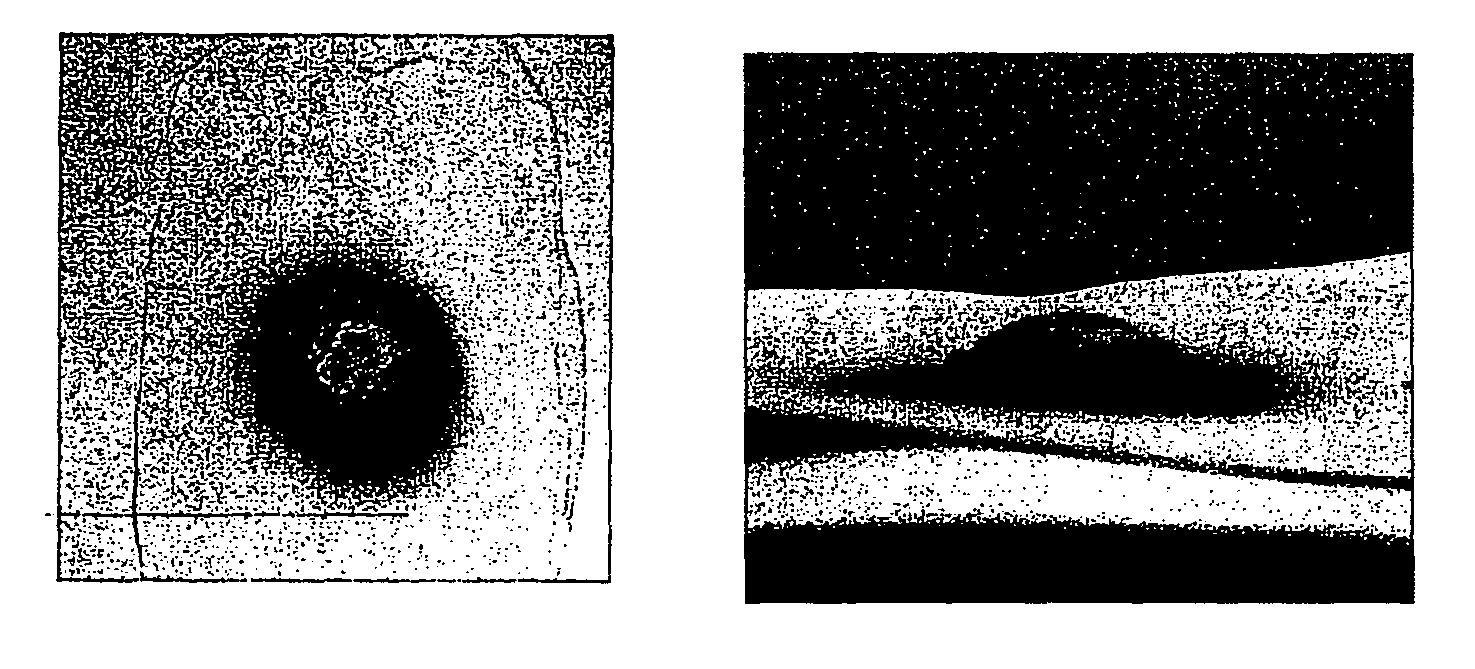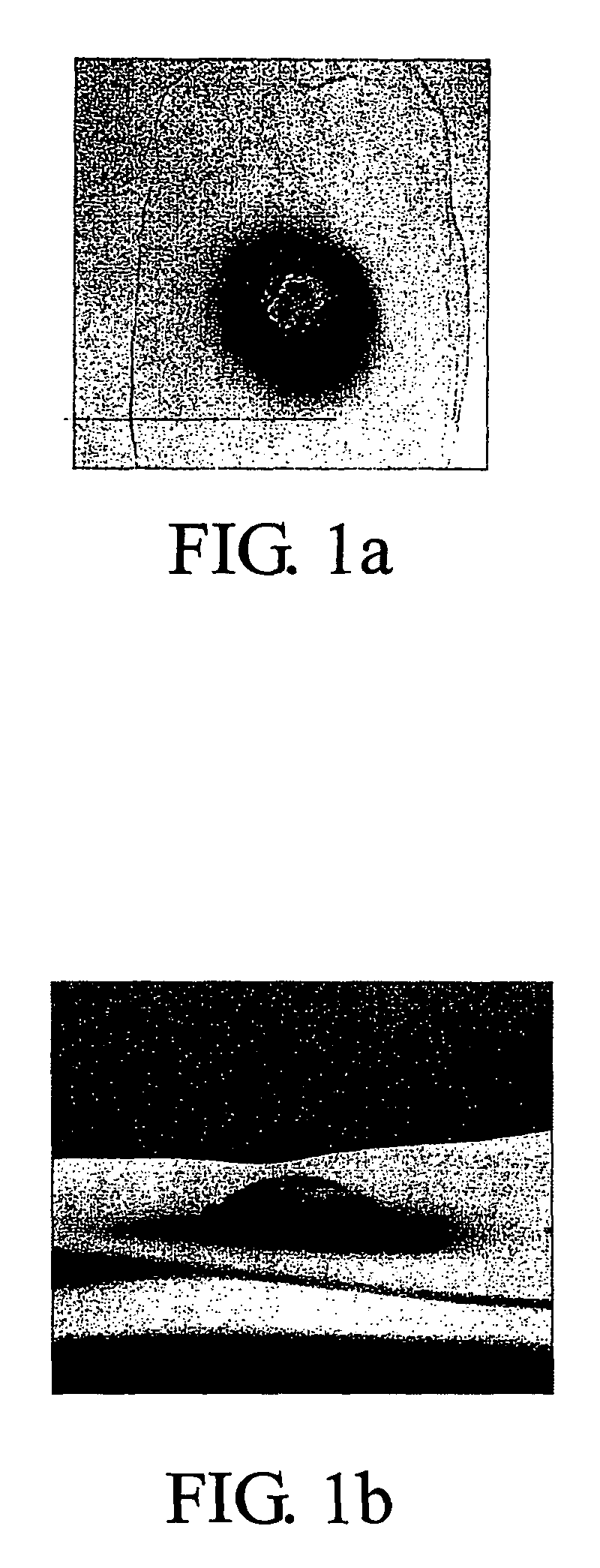Organic/inorganic composite and fire-resistant plate utilizing the same
a technology of organic polymer and fire-resistant plate, which is applied in the direction of synthetic resin layered products, tyre parts, polyurea/polyurethane coatings, etc., to achieve the effect of preventing direct heat transfer to the interior, strengthening and enhancing mechanical and fire-resistant properties of organic polymer, and maintaining structural integrity without peeling
- Summary
- Abstract
- Description
- Claims
- Application Information
AI Technical Summary
Benefits of technology
Problems solved by technology
Method used
Image
Examples
example 1
[0030]Poly(ethylene-co-acrylic acid) containing R—COOH was dissolved or dispersed in water. Subsequently, inorganic particles Al(OH)3 with reactive functional groups M-OH were added to the polymer solution, and the mixture was stirred at 70˜90° C. for 20 minutes. 1 mm-thick mixture slurry was coated on a teflon sheet, and then placed in an oven, dried at 60° C. for 60 minutes, 80° C. for 60 minutes, 100° C. for 60 minutes, 120° C. for 30 minutes, 140° C. for 30 minutes, 160° C. for 30 minutes, 180° C. for 30 minutes, and finally, molded at 200° C. for 240 minutes.
[0031]As shown in FIG. 4, the sample layer 20 was removed from the teflon sheet (not shown), and placed on a piece of A4 size paper 10. A flame test was conducted on the surface of the sample layer 20 by butane gas torch 30 with flame temperature of 1000-1200° C. (flame 40) for 30 seconds to 3 minutes. The result of the burning phenomenon of the piece of A4 size paper is summarized in Table 1. No scorching was observed on t...
example 2
[0033]Poly(ethylene-co-acrylic acid) containing R—COOH was dissolved or dispersed in water. Subsequently, inorganic particles Mg(OH)2 with reactive functional groups M-OH were added to the polymer solution, and the mixture was stirred at 70-90° C. for 20 minutes. 1 mm-thick mixture slurry was coated on a teflon sheet, and then placed in an oven, dried at 60° C. for 60 minutes, 80° C. for 60 minutes, 100° C. for 60 minutes, 120° C. for 30 minutes, 140° C. for 30 minutes, 160° C. for 30 minutes, 180° C. for 30 minutes, and finally, molded at 200° C. for 240 minutes.
[0034]As shown in FIG. 4, the sample layer 20 was removed from the teflon sheet (not shown), and placed on a piece of A4 size paper 10. A flame test was conducted on the surface of the sample layer 20 by butane gas torch 30 with flame temperature of 1000-1200° C. (flame 40) for 30 seconds to 3 minutes. The result of the burning phenomenon of the piece of A4 size paper is summarized in Table 1. No scorching was observed on t...
example 3
[0036]Poly(acrylic acid-co-maleic acid) containing R—COOH was dissolved or dispersed in water. Subsequently, inorganic particles Al(OH)3 with reactive functional groups M-OH were added to the polymer solution, and the mixture was stirred at 70-90° C. for 20 minutes. 1 mm-thick mixture slurry was coated on a teflon sheet, and then placed in an oven, dried at 60° C. for 60 minutes, 80° C. for 60 minutes, 100° C. for 60 minutes, 120° C. for 30 minutes, 140° C. for 30 minutes, 160° C. for 30 minutes, 180° C. for 30 minutes, and finally, molded at 200° C. for 240 minutes.
[0037]As shown in FIG. 4, the sample layer 20 was removed from the teflon sheet (not shown), and placed on a piece of A4 size paper 10. A flame test was conducted on the surface of the sample layer 20 by butane gas torch 30 with flame temperature of 1000-1200° C. (flame 40) for 30 seconds to 3 minutes. The result of the burning phenomenon of the piece of A4 size paper is summarized in Table 1. No scorching was observed o...
PUM
| Property | Measurement | Unit |
|---|---|---|
| number average molecular weights | aaaaa | aaaaa |
| number average molecular weights | aaaaa | aaaaa |
| number average molecular weights | aaaaa | aaaaa |
Abstract
Description
Claims
Application Information
 Login to View More
Login to View More - R&D
- Intellectual Property
- Life Sciences
- Materials
- Tech Scout
- Unparalleled Data Quality
- Higher Quality Content
- 60% Fewer Hallucinations
Browse by: Latest US Patents, China's latest patents, Technical Efficacy Thesaurus, Application Domain, Technology Topic, Popular Technical Reports.
© 2025 PatSnap. All rights reserved.Legal|Privacy policy|Modern Slavery Act Transparency Statement|Sitemap|About US| Contact US: help@patsnap.com



